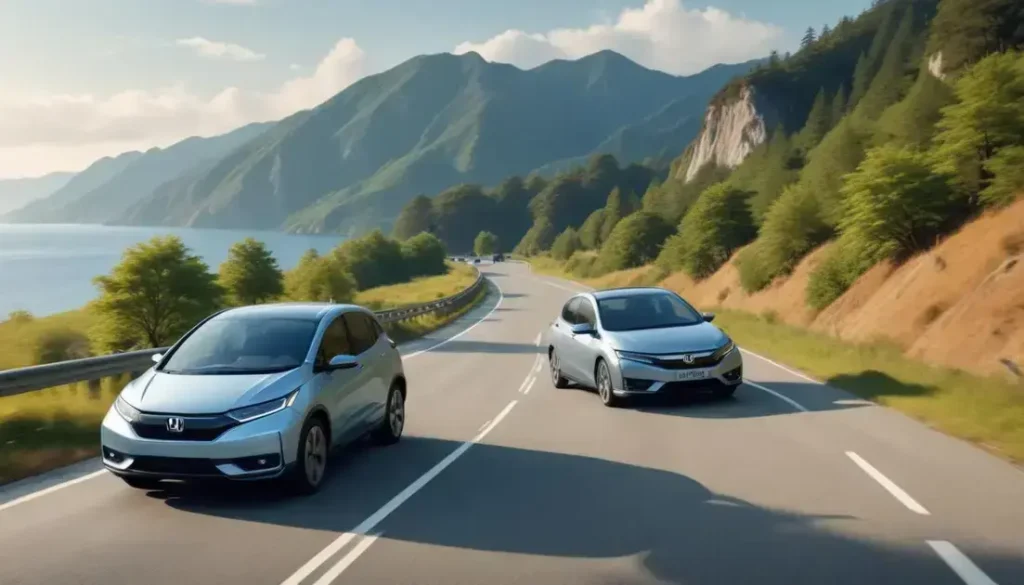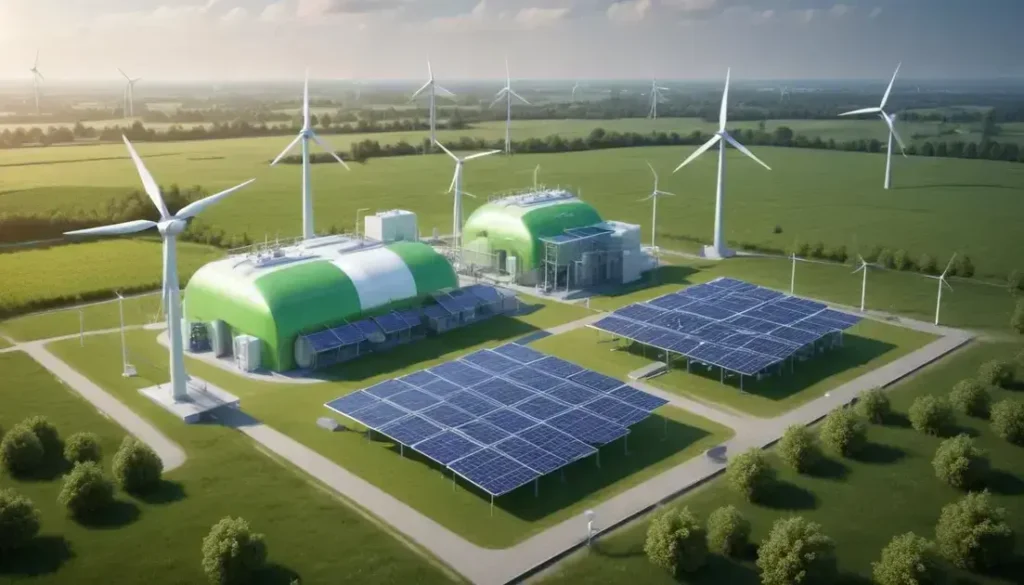Honda is committed to achieving carbon neutrality by 2050 through its innovative strategies, focusing on electric vehicles, sustainable manufacturing processes, and strong governance to engage its supply chain and reduce environmental impact.
In the automotive world, Honda is making waves with its ambitious ESG strategy. How is this impacting Australian markets? Let’s explore!
Honda’s commitment to carbon neutrality by 2050
Honda is committed to achieving carbon neutrality by 2050, aiming to reduce its overall environmental impact. This ambitious goal encompasses not only the production of electric vehicles but also manufacturing processes that focus on sustainability.
The company’s strategy includes increased investment in renewable energy and a shift toward electric mobility. By promoting the use of electric and hybrid vehicles, Honda plans to reduce greenhouse gas emissions significantly over the coming decades.
To achieve this target, Honda is exploring innovative technologies such as fuel cell vehicles and battery advancements. These initiatives demonstrate the company’s commitment to integrate environmentally friendly practices throughout its operations.
Furthermore, Honda aims to collaborate with suppliers and other stakeholders to encourage a shared commitment to sustainability. This multi-faceted approach will ensure that their path to carbon neutrality is not only effective but also inclusive, engaging all partners in their supply chain.
Insights from Honda’s 2025 ESG report
The insights from Honda’s 2025 ESG report reveal a robust strategy focused on sustainability and corporate responsibility. The report highlights key performance indicators that demonstrate Honda’s commitment to reducing its environmental footprint.
One major focus is the goal of achieving carbon neutrality by 2050. As part of this effort, Honda plans to enhance its electric vehicle lineup while investing in renewable energy sources to power its manufacturing facilities.
Furthermore, the report outlines initiatives aimed at improving resource efficiency and minimizing waste throughout the production process. This includes adopting circular economy principles, where materials are reused and recycled as much as possible.
Honda is also dedicated to enhancing social responsibility through community engagement and stakeholder collaboration. The company aims to increase transparency in its governance practices, ensuring ethical decision-making at all levels. These comprehensive insights indicate Honda’s proactive approach to ESG challenges, positioning the company as a leader in sustainable automotive solutions.
Triple Action to ZERO strategy explained
The Triple Action to ZERO strategy is Honda’s comprehensive approach to achieving sustainability in its operations. This strategy encompasses three vital elements: decarbonisation, resource circulation, and environmental protection.
The first pillar, decarbonisation, focuses on reducing carbon emissions across all stages of the vehicle lifecycle. This includes enhancing production techniques, increasing the use of renewable energy sources, and expanding the range of electric vehicles.
Resource circulation is aimed at minimising waste and maximising the use of materials. Honda seeks to implement recycling initiatives and sustainable sourcing practices to create a circular economy within its manufacturing processes.
Lastly, environmental protection extends beyond Honda’s manufacturing plants. The company actively engages in community-driven initiatives to preserve biodiversity and contribute to environmental stewardship. These collective actions underline Honda’s commitment to reducing its environmental impact while promoting a sustainable future for mobility.
The evolution of Honda’s electric vehicle lineup
Honda has made significant progress in the evolution of its electric vehicle lineup, demonstrating a commitment to sustainable mobility. The journey began with the introduction of the Honda Insight, one of the first hybrid cars on the market. This innovative vehicle paved the way for Honda’s focus on electrification.
As technology advanced, Honda expanded its electric offerings, launching fully electric models such as the Honda e. This compact electric vehicle combines modern technology with retro design, appealing to eco-conscious consumers. The Honda e is equipped with advanced safety features and connectivity, showcasing Honda’s dedication to innovation.
The company’s strategy further includes plans for a diverse range of electric vehicles, targeting a broader audience. By 2030, Honda aims to have a robust lineup that meets the needs of various markets. This includes not only passenger cars but also electric SUVs and other segments.
Honda’s commitment to research and development is evident in its continuous efforts to enhance battery technology, aiming for longer ranges and faster charging capabilities. As part of its broader environmental strategy, Honda envisions a future where electric vehicles play a crucial role in reducing carbon emissions and promoting sustainable transportation solutions.
How Honda’s factories are going carbon neutral
Honda’s commitment to sustainability is evident in its efforts to make factories carbon neutral. By implementing innovative technologies and practices, Honda aims to significantly reduce greenhouse gas emissions from its manufacturing processes.
A key strategy involves the use of renewable energy sources such as solar and wind power. Many Honda factories are transitioning to these cleaner energy options, which not only lowers emissions but also aligns with global energy trends.
Additionally, Honda is investing in energy-efficient machinery and production methods that minimise wastage and enhance productivity. This includes optimising the manufacturing process to ensure that resources are used effectively, further reducing the carbon footprint.
Moreover, Honda encourages a culture of sustainability by engaging employees in eco-friendly initiatives. Training programs are developed to make everyone aware of their role in maintaining environmentally responsible practices within the workplace. Through these combined efforts, Honda is taking significant steps towards achieving carbon neutrality in its factories, showcasing leadership in automotive manufacturing.
Engaging the supply chain for sustainable practices
Engaging the supply chain is crucial for promoting sustainable practices across Honda’s operations. By collaborating with suppliers, Honda aims to uphold its environmental commitments and drive sustainability from the ground up.
One essential strategy is to promote transparency and sharing of best practices throughout the supply chain. Honda works closely with suppliers to ensure they adhere to environmental standards, reducing carbon footprints and enhancing resource efficiency.
Additionally, Honda encourages suppliers to invest in sustainable technologies and practices. This collaborative effort helps create a more circular economy, where materials are reused and waste is minimised. Honda’s initiatives include providing training and resources to help suppliers adopt eco-friendly processes.
Moreover, Honda is actively seeking to source materials responsibly. This involves partnering with suppliers who prioritise sustainability in their sourcing methods. By ensuring that raw materials are eco-friendly, Honda can significantly reduce the environmental impacts associated with production.
Through these concerted efforts, Honda is not only enhancing its sustainability goals but also fostering a culture of environmental responsibility that extends beyond its immediate operations, creating a ripple effect throughout the industry.
Governance and risk management in Honda’s ESG efforts
Governance and risk management are fundamental aspects of Honda’s Environmental, Social, and Governance (ESG) efforts. The company has established robust frameworks to ensure transparency, accountability, and ethical decision-making across all operations.
A critical component of Honda’s governance structure is the Board of Directors, which oversees ESG initiatives and ensures alignment with corporate values. This board regularly assesses potential risks associated with environmental policies and operational practices, enabling proactive management of challenges that may arise.
To support its governance framework, Honda employs comprehensive risk assessment methodologies. These methodologies identify and evaluate risks related to environmental impacts, regulatory compliance, and social responsibility. By integrating risk management into strategic planning, Honda effectively mitigates potential threats to its sustainability objectives.
Furthermore, Honda engages stakeholders in its governance processes, ensuring that their voices contribute to decision-making. This engagement fosters a culture of accountability and encourages continuous improvement in ESG practices. Through these governance measures, Honda not only meets regulatory requirements but also builds long-term relationships with investors and consumers who value sustainability.
In Summary: Honda’s Commitment to Sustainability
Honda is taking significant steps towards sustainability through its innovative strategies and strong governance practices. By focusing on carbon neutrality and engaging with its supply chain, Honda showcases its commitment to environmental responsibility.
The company’s efforts in electric vehicle development and efficient manufacturing processes highlight its role as a leader in the automotive industry. Moreover, Honda’s risk management and governance frameworks ensure that sustainability remains a core part of its operations.
With these initiatives, Honda not only aims to reduce its own environmental impact but also inspires others in the industry to follow suit. Ultimately, Honda’s proactive approach sets a positive example for a more sustainable future in transportation.
Frequently Asked Questions
What is Honda’s goal for carbon neutrality?
Honda aims to achieve carbon neutrality by 2050, focusing on reducing emissions across all stages of its vehicle lifecycle.
How is Honda engaging its supply chain for sustainability?
Honda promotes transparency and encourages suppliers to adopt eco-friendly practices, ensuring that sustainability is a shared goal throughout the supply chain.
What electric vehicles does Honda offer?
Honda has expanded its electric vehicle lineup, including models like the Honda Insight and the Honda e, focusing on innovative and sustainable mobility solutions.
How does Honda plan to improve its manufacturing processes?
Honda is investing in renewable energy, energy-efficient technologies, and recycling initiatives to enhance the sustainability of its manufacturing operations.
What role does governance play in Honda’s ESG efforts?
Honda’s governance framework includes a Board of Directors that oversees ESG initiatives, ensuring accountability and ethical decision-making in sustainability efforts.
How can other companies follow Honda’s lead in sustainability?
Other companies can adopt similar governance structures, engage their supply chains, and invest in sustainable technologies to drive positive environmental impacts.


